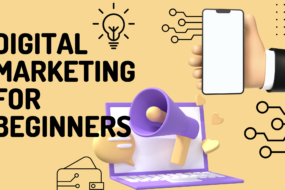- Home
- Digital Marketing
- Email Marketing Best Practices ...
Discover the Email Marketing Best Practices for Engagement and Conversions in this comprehensive guide. Elevate your email marketing game to boost engagement and drive conversions.
Introduction
In today’s digital age, email marketing remains a powerful tool for businesses to connect with their audience. However, to make the most of this strategy, you need to be well-versed in email marketing best practices for engagement and conversions. This guide will equip you with the knowledge and strategies to create effective email campaigns that not only engage your audience but also convert them into loyal customers.

The Foundation of Email Marketing
Email marketing serves as a direct channel to your audience, making it a cornerstone of digital marketing. To excel in this field, you must lay a strong foundation.
Understanding Your Audience
Email marketing starts with understanding your audience. Research their preferences, demographics, and behaviors to craft personalized content that resonates with them. Your emails should cater to their needs and interests.
Building a Quality Email List
A successful email marketing campaign begins with a high-quality email list. Focus on organic growth and avoid purchasing lists to ensure you have engaged subscribers genuinely interested in your content.
Crafting Captivating Subject Lines
Your email’s subject line is the first impression your audience gets. Make it compelling, concise, and relevant to pique their interest and encourage them to open your email.
Creating Mobile-Responsive Emails
In today’s mobile-driven world, ensure your emails are optimized for mobile devices. A responsive design guarantees a seamless experience for all subscribers.
Content that Converts
Once you’ve laid the foundation, it’s time to focus on the content within your emails.
Personalization and Segmentation
Segment your email list to deliver personalized content to different groups. Personalization increases engagement and conversion rates by catering to the specific needs and interests of each segment.
High-Quality Visuals
Incorporate eye-catching visuals into your emails. Images and videos not only make your emails more engaging but also help convey your message effectively.
Strong Call to Action (CTA)
Every email should have a clear and persuasive CTA. Whether it’s to make a purchase, sign up for a newsletter, or download a resource, a compelling CTA is essential.
A/B Testing
Experiment with different elements of your emails, such as subject lines, CTA buttons, and visuals, to identify what resonates most with your audience. A/B testing helps refine your email marketing strategy.
Deliverability and Timing
The success of your email marketing campaign depends on more than just the content; it’s also about when and how you send your emails.
Avoiding the Spam Folder
To ensure your emails land in the recipient’s inbox and not the spam folder, follow email deliverability best practices. These include using a recognizable sender name, providing an easy way to unsubscribe, and maintaining a clean email list.
Timing Matters
Pay attention to when you send your emails. Conduct research to determine the best days and times when your audience is most active and likely to engage with your emails.
Email Marketing Best Practices for Engagement and Conversions
Now that you have a solid understanding of the fundamentals, let’s delve deeper into the best practices that can significantly impact your email marketing success.
Email Automation
Leverage email automation tools to send personalized emails at the right time. Automation streamlines your marketing efforts and ensures timely follow-ups.
Customer Feedback Loop
Regularly seek feedback from your subscribers to understand their needs better. Use this information to tailor your email content accordingly.
Social Media Integration
Integrate your email marketing efforts with your social media platforms. This cross-channel promotion can extend your reach and increase engagement.
Data Analysis
Invest time in analyzing the data and performance metrics of your email campaigns. Use this data to refine your strategy continually.
FAQs
Q: How often should I send marketing emails?
A: The frequency of your emails should align with your audience’s preferences. Monitor engagement rates and adjust your email frequency accordingly.
Q: What’s the ideal length for an email?
A: Keep your emails concise and to the point. Most readers prefer shorter, scannable content that gets the message across quickly.
Q: Are emojis appropriate in marketing emails?
A: Emojis can add a touch of personality to your emails, but use them sparingly and ensure they match your brand’s tone.
Q: How can I improve my email open rates?
A: Craft attention-grabbing subject lines, personalize your emails, and clean your email list regularly to enhance open rates.
Q: Is it essential to have a mobile-responsive email design?
A: Yes, it’s crucial. With the majority of users accessing emails on mobile devices, a mobile-responsive design is a must to ensure a seamless user experience.
Q: What’s the significance of A/B testing?
A: A/B testing helps you fine-tune your email content and design by comparing two versions to see which one performs better, ultimately improving your conversion rates.
Conclusion
Email marketing is a dynamic field that requires constant adaptation to stay effective. By implementing these email marketing best practices for engagement and conversions, you’ll be well on your way to creating compelling email campaigns that not only engage your audience but also drive valuable conversions. Remember, it’s not just about sending emails; it’s about sending the right emails at the right time to the right people.
















